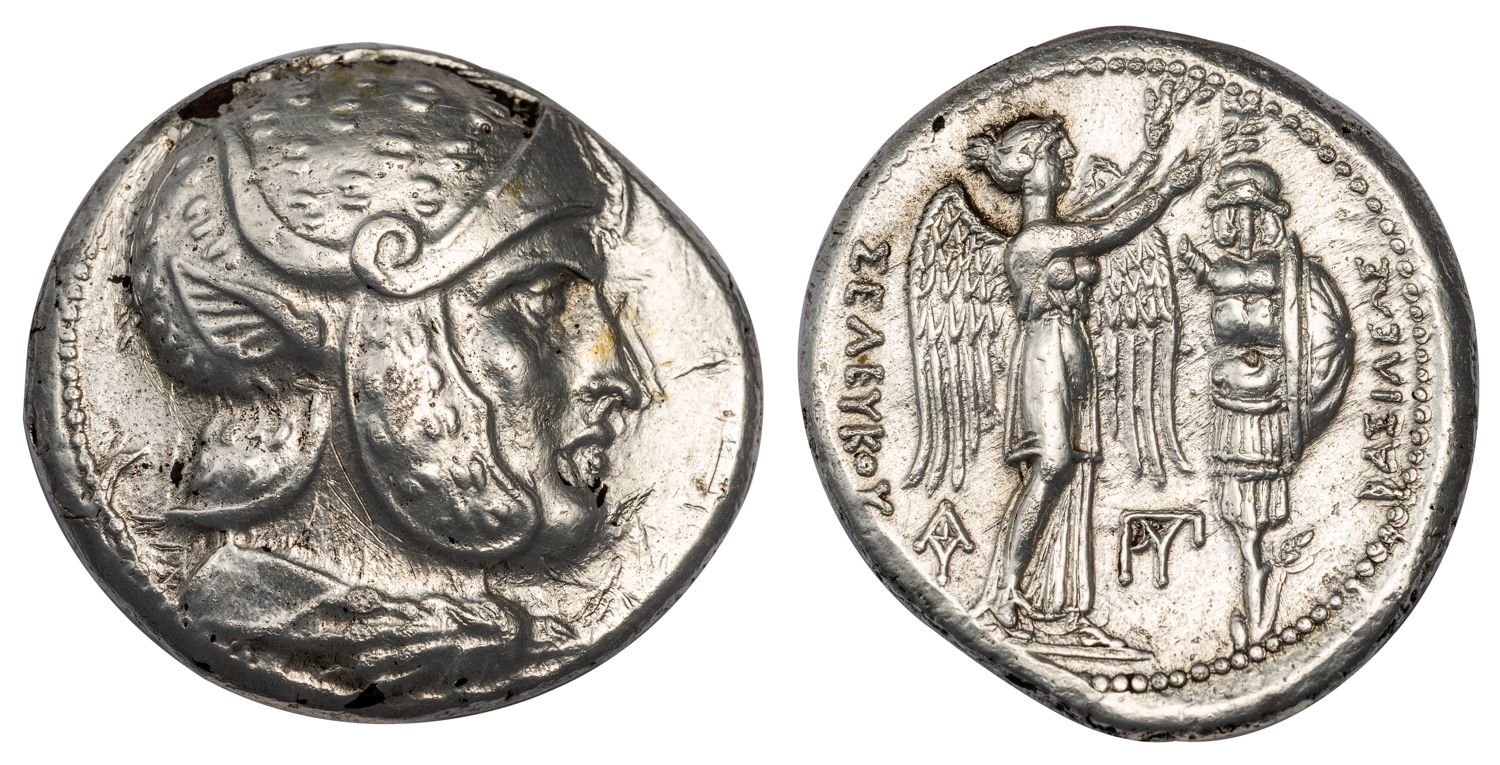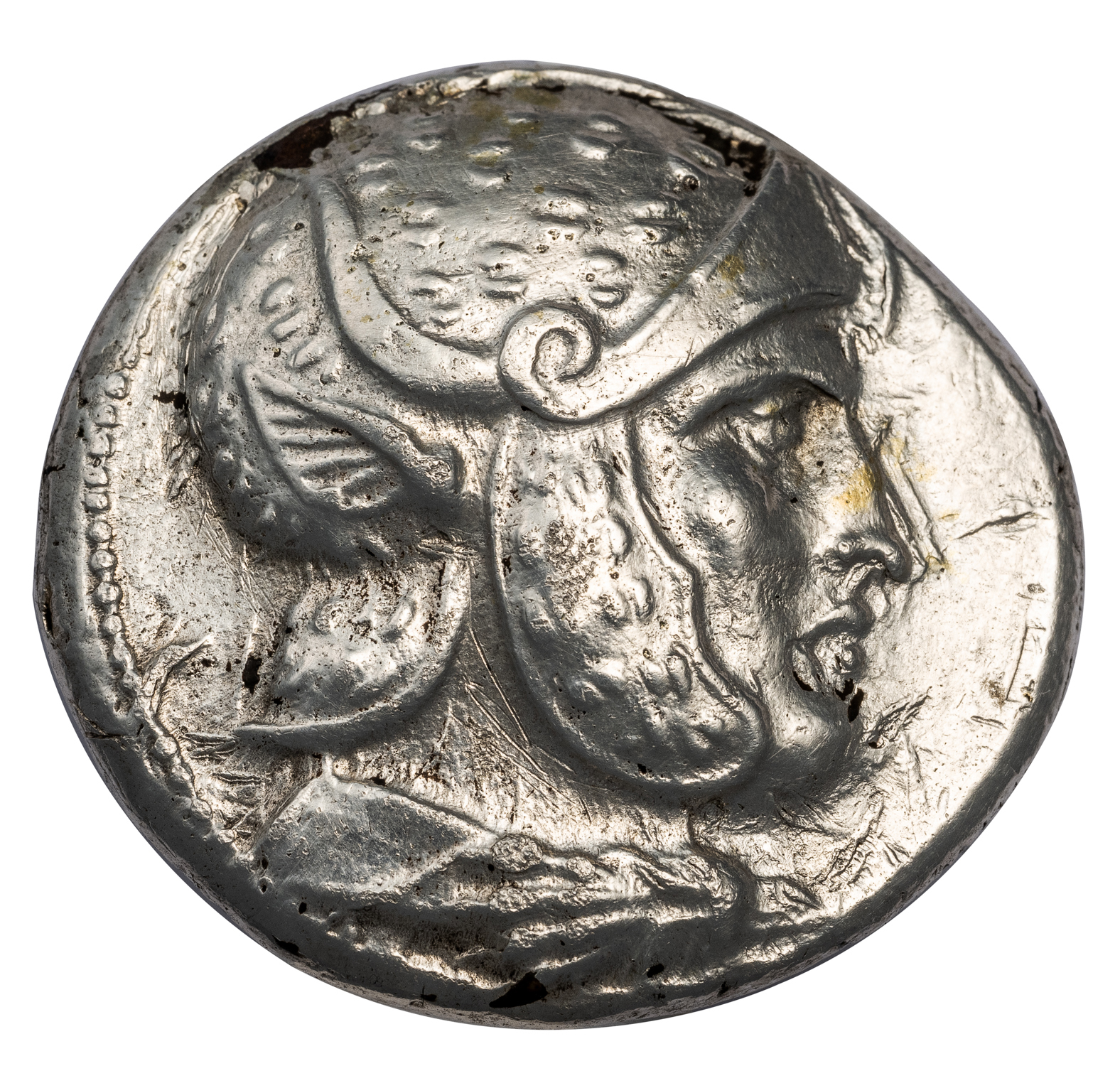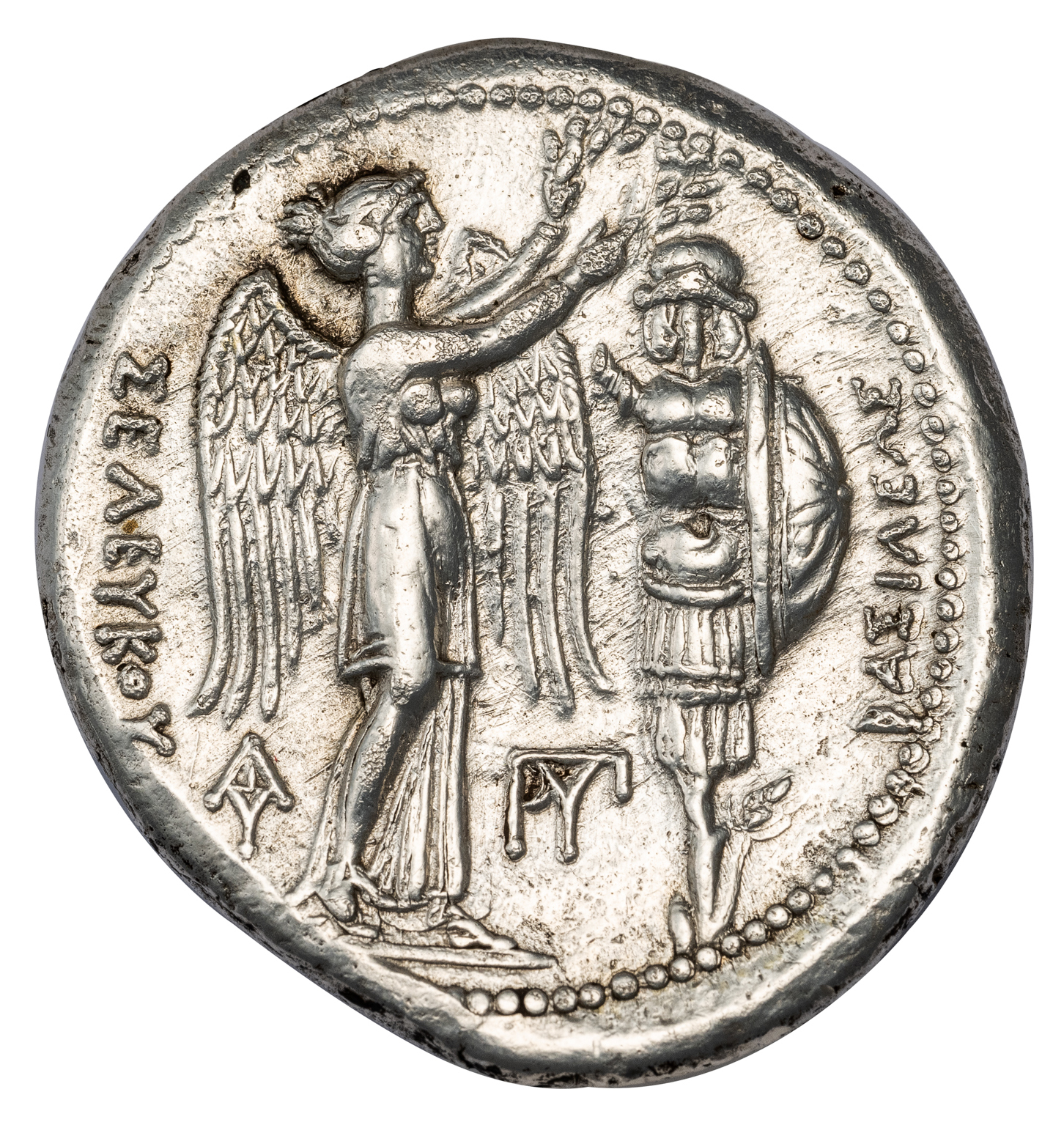SELEUCUS I FOUREE TETRADRACHM – EXCEPTIONALLY RARE AND HIGH GRADE IMITATIVE VICTORY AND TROPHY ISSUE – MINT STATE GREEK SELEUCID EMPIRE COIN (Inv. 19856)
SOLD
19856. SELEUCID KINGDOM. SELEUCUS I, 312–281 BC.
Silver plated “fourrée” Tetradrachm, 14.46 g, 27 mm. Issue of an uncertain mint, based on an issue of Susa, ca. 305/4–295 BC.
Obv. Head of Seleucus right, wearing helmet with panther skin covering and bull’s ears and horns. Rev. BAΣIΛEΩΣ ΣEΛEYKOY, Nike standing right, crowning trophy, AY control monogram in left field, ΓΑY control monogram in center field.
SC 173.5b (for prototype); HGC 9, 20 (for prototype). Cf. SC II, P29 (a plated issue with same types but different monograms) as well as Elsen 147, 6/4/2021, lot 91 for a lower grade specimen of the same issue but from different dies.
Good XF/AU, some scratches on the obverse, a spectacular strike with full details, exceptionally bright and lustrous, silver cladding intact except for some small areas on the obverse where the bronze core may be seen (may be encapsulated upon request).
The Susian trophy coinage of Seleucus I seems to have enjoyed a great deal of popularity in the Iranian territories of the Seleucid empire both during his lifetime and after. Hoard evidence indicates that they even continued to circulate in Persis after the displacement of direct Seleucid authority by the local Frataraka rulers in the early third century BC and local fractions with the Susian trophy types were struck in the name of Antiochus I in Drangiana (SC 226–228). This popularity spawned a variety of imitations of varying degrees of quality, some of which were produced as fourrée with silver surface plating over a bronze core. Only a single plated tetradrachm was published in the plated coinage appendix to Seleucid Coins, Part II (P29) and since then only seven more have appeared on CoinArchives. Of these, five copy the control monograms of SC 173.12–14, suggesting that this series was the preferred model for the fourrées. The present tetradrachm is apparently the third known example of a plated issue with the controls of SC 173.5 (the others are Elsen 147, 6/4/2021, lot 91, same issue as above but from different dies, and Pars 6, 4/20/2020, lot 57, very similar controls and from different dies as well).
All known Susian trophy tetradrachm fourrées are struck from imitative dies (the Pars coin is mistakenly described as having been struck from Kritt’s official obverse die A65) although some are executed with a very high degree of skill. As one would expect, the present piece does not employ any of the official dies illustrated in the studies by Kritt or Marest–Caffey, but its engraver was clearly an individual of exemplary skill. It also shares its obverse die with a fourrée tetradrachm sold in Baldwin’s 68, 9/28/2010, lot 3434, which features the control monograms of SC 173.14). This is an extremely important die link because it shows that fourrées with different monogram sets were produced at the same facility and raises questions about the producers. Were they simply sophisticated counterfeiters who used multiple prototypes for their dies, or could they possibly have belonged to a distinct mint with some official sanction, striking fourrées to meet an emergency?



